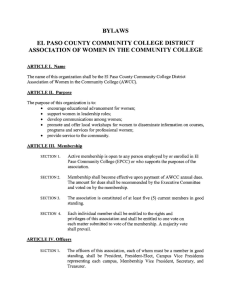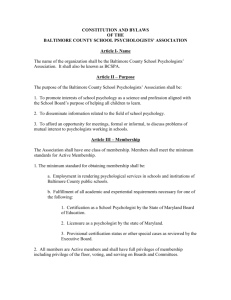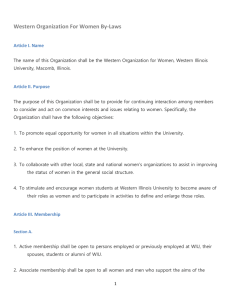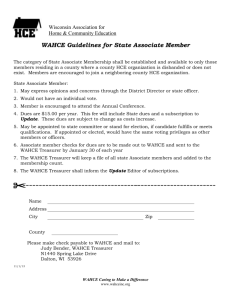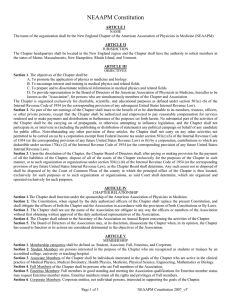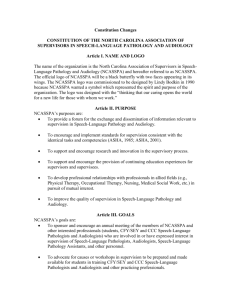KATH Constitution 2006 - Kentucky Association of Teachers of History
advertisement
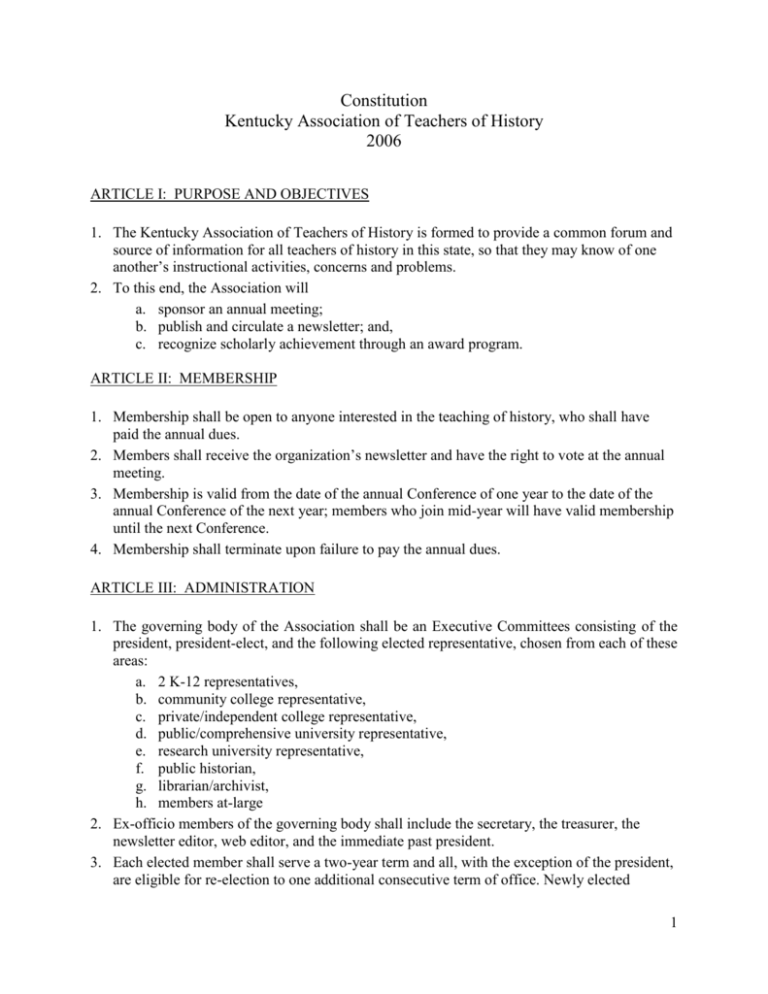
Constitution Kentucky Association of Teachers of History 2006 ARTICLE I: PURPOSE AND OBJECTIVES 1. The Kentucky Association of Teachers of History is formed to provide a common forum and source of information for all teachers of history in this state, so that they may know of one another’s instructional activities, concerns and problems. 2. To this end, the Association will a. sponsor an annual meeting; b. publish and circulate a newsletter; and, c. recognize scholarly achievement through an award program. ARTICLE II: MEMBERSHIP 1. Membership shall be open to anyone interested in the teaching of history, who shall have paid the annual dues. 2. Members shall receive the organization’s newsletter and have the right to vote at the annual meeting. 3. Membership is valid from the date of the annual Conference of one year to the date of the annual Conference of the next year; members who join mid-year will have valid membership until the next Conference. 4. Membership shall terminate upon failure to pay the annual dues. ARTICLE III: ADMINISTRATION 1. The governing body of the Association shall be an Executive Committees consisting of the president, president-elect, and the following elected representative, chosen from each of these areas: a. 2 K-12 representatives, b. community college representative, c. private/independent college representative, d. public/comprehensive university representative, e. research university representative, f. public historian, g. librarian/archivist, h. members at-large 2. Ex-officio members of the governing body shall include the secretary, the treasurer, the newsletter editor, web editor, and the immediate past president. 3. Each elected member shall serve a two-year term and all, with the exception of the president, are eligible for re-election to one additional consecutive term of office. Newly elected 1 4. 5. 6. 7. 8. members shall take office at the conclusion of the annual meeting. The Executive Committee may replace a member who misses more than three meetings without notifying the president and/or having reasons accepted by the Executive Committee. The Executive Committee may then appoint a replacement. The Executive Committee shall meet at least three times a year and shall be vested with the administrative authority of the Association. The Executive Committee shall determine the organization’s policies, establish dues, determine the annual conference theme, and oversee the committees that arrange for the annual meeting, and publicize Association events and awards. The president shall preside over meetings of the Executive Committee and the annual meeting; shall be responsible for calling and setting the agenda for the Executive Committee, appoint such special committees from the membership as needed; shall chair the annual meeting; shall fill any vacancies on the Executive Committee until the next scheduled election; and shall coordinate the general activities of the Association. a. Standing committees of the Board are established to allow for more evenly distributed responsibilities. The President will assign to each of the following committees a designated chair/convener: Conference Program and Speakers Committee (the president will serve on this committee) Conference location and Logistics Committee (the president-elect will serve on this committee) Papers and Awards Committee (the past-president will serve on this committee) Nominating Committee (the secretary will serve on this committee) Funding and Finance Committee (the treasurer will serve on this committee) The President shall nominate and the Executive Committee shall approve the following appointed positions: secretary, treasurer, newsletter editor, and web editor. The treasurer shall receive all monies of the organization; shall pay all obligations of the Association, as approved by the Executive Committee; and shall present periodic reports to the Executive Committee and membership. The secretary shall keep the minutes of all meetings of the Association and its Executive Committee, and shall ensure that the organization’s records are regularly deposited in a suitable archival repository. ARTICLE IV: ELECTION OF OFFICERS 1. Nominations for all offices will be made by a nominating committee and shall be approved by the Executive Committee at least two months before the annual meeting. The report of the nominating committee may be supplemented by nominations from the floor. 2. The newsletter editor will ensure that information regarding elections is provided to the membership prior to the annual meeting, where said election will take place. Any members unable to attend may vote by mail, email, or written proxy. 2 ARTICLE V: AMENDMENTS 1. Amendments to this Constitution must be proposed at least two months prior to the annual meeting by ten members or by two elected representatives – the president here included. Written notice must be given to the entire membership before the annual meeting. Each amendment shall be voted separately and a two-thirds vote of those present, or representatives by mail ballot or written proxy, shall be necessary for adoption. 2. By-laws may be changed by majority vote of members present at the annual meeting without previous written notice. ARTICLE VI: DISSOLUTION 1. Upon dissolution of this organization, all assets, property, and interests which it shall then possess shall be disposed of in a manner determined by a majority of the Executive Committee. Assets cannot be distributed to members and must be transferred for a taxexempt purpose. BY-LAWS 1. The Association shall sponsor the Anita Sanford Tolson Award for the best high school paper in history, the Thomas D. Clark Award for the best undergraduate paper in history, and the George C. Herring Award for the best graduate paper in history. 2. Membership dues shall be $10.00 for individuals and $5.00 for students. 3. New presidents shall be elected at the annual meeting one-year previous to their taking office and will serve as president-elect on the Executive Committee during that year. 4. The archival repository for the Association’s records shall be the Kentucky Historical Society. 3
